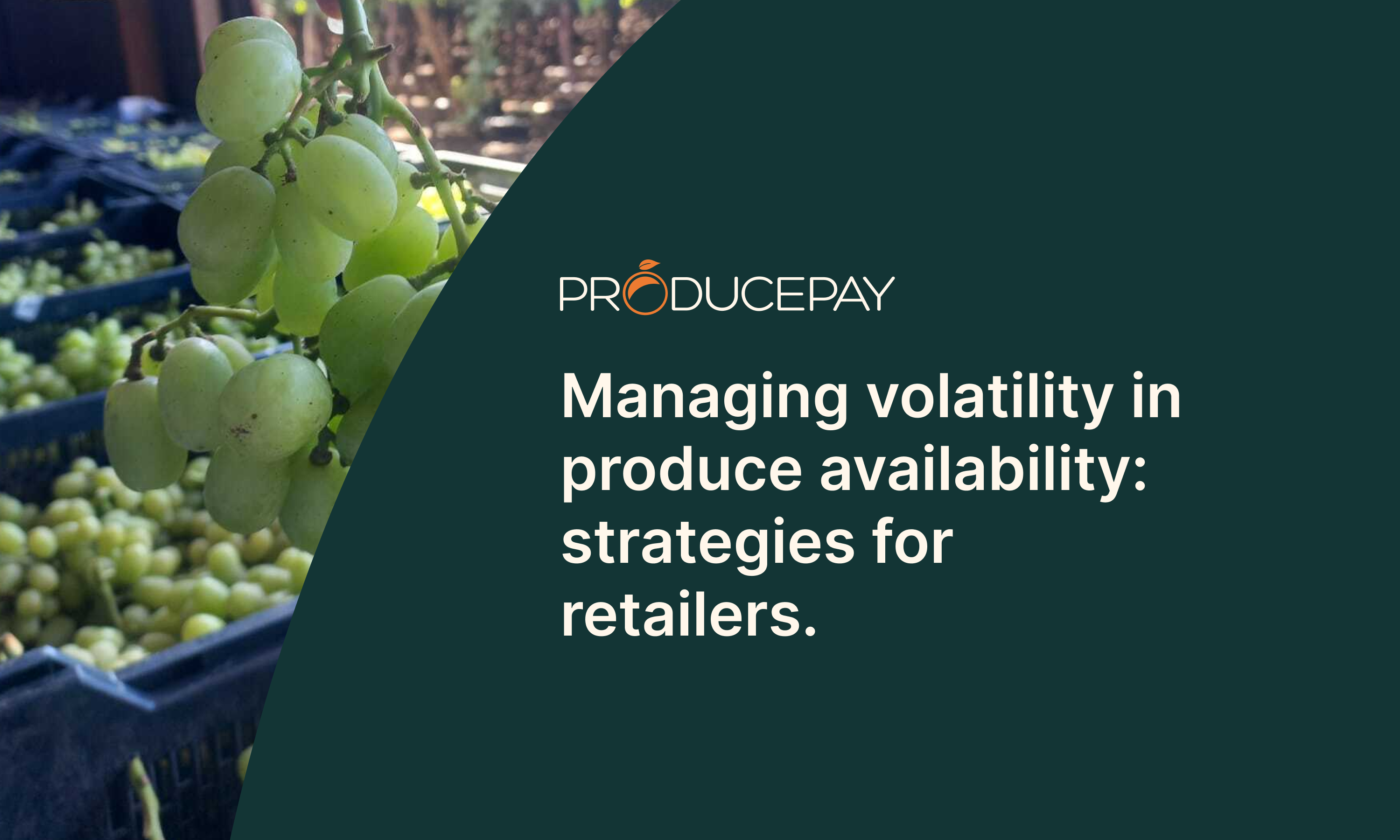
Managing volatility in produce availability: strategies for retailers
The fresh produce industry is one of the most volatile, impacted by climate change, pests, diseases, price fluctuations, and supply inconsistency. This volatility threatens both agribusiness stability and global food security.
To mitigate this volatility and ensure supply chain stability, effective strategies are essential to feed a growing global population that demands fresher, more sustainable, and higher-quality products.
Moreover, adopting innovative technology is crucial for better supply chain management, and optimizing transportation, inventory, and storage. This aims to minimize losses and ensure product freshness.
Why is fresh produce availability so volatile?
The volatility in fresh produce availability is a complex phenomenon resulting from a combination of interrelated factors present at various stages along the supply chain.
Volatility during growing season
Climate is a major factor affecting crops during the growing stage. While it has always posed challenges in agriculture, it has become increasingly unpredictable and devastating. Extreme weather events like droughts, floods, frosts, and storms directly impact crop yields.
An example is the El Niño phenomenon, which has caused significant damage in multiple key growing countries like Peru, Ecuador, Mexico, and the United States. Additionally, temperature and precipitation variations associated with such phenomena disrupt crop cycles, either advancing or delaying harvests and complicating agricultural planning.
Changes in climate and environmental conditions also favor the emergence of pests and diseases, which can be devastating for crops, drastically reducing production volumes or damaging product quality. Globalization and climate change have increased the frequency and severity of these outbreaks, making it harder for farmers to predict and manage these risks.
Labor availability and cost are other critical factors, especially in regions where agriculture relies on temporary workers who migrate according to growing seasons. Migratory restrictions and the need for more skilled workers lead to delays in planting and harvesting and increased labor costs.
Volatility in the supply chain
After harvest, fresh produce must be transported quickly to markets, often traveling long distances and passing through multiple intermediaries. Inadequate infrastructure, port congestion, or disrupted transport routes due to adverse weather conditions can cause delays and product losses. Last year’s Panama Canal blockage due to severe drought affected banana shipments, for example.
This is why cold storage is crucial for transporting fresh produce, but several interruptions occur in this cold chain. Power outages or equipment failures can result in the loss of large quantities of product.
Additionally, many growing regions are highly susceptible to production and marketing regulations, as well as unexpected geopolitical events, further increasing volatility in supply availability.
Strategies for managing volatility in produce availability
Managing volatility in fresh produce availability requires a combination of innovative strategies and risk management practices. Here are some of the most effective strategies:
1. Diversification of suppliers
Not relying on a single supplier or region is key in fresh produce commercialization, as it provides flexibility and improves the ability to react to any disruption affecting availability. Having multiple suppliers from diverse regions ensures that if one region faces supply issues, retailers can source from others to cover the lost volume.
Furthermore, geographical diversification ensures a more continuous supply throughout the year. Even for the same commodity, seasonality often varies by region. So having suppliers with different seasons complements produce availability and minimizes supply volatility.
2. Strong and lasting relationships with sustainable growers
Long-term relationships with reliable growers can provide great supply stability. Offering guaranteed buyout contracts and fixed prices gives farmers the security to invest in better agricultural practices and technology, allowing them to grow their operations and meet supply requirements.
Additionally, ensuring growers use sustainable agricultural practices not only improves produce quality but also increases consumer confidence, bringing greater long-term supply stability.
3. Technology adoption to optimize the supply chain
Facing volatility in the agricultural industry requires adopting innovative technology as a central strategy. Technology not only makes production and marketing operations more efficient, but also transforms the sector by offering solutions that promote predictability and stability.
Adoption of advanced logistics technologies, such as real-time shipment tracking, route optimization, and improved packaging materials and procedures, can reduce freight inefficiencies, delivery times, and product losses.
Besides, implementing cold storage technology that is more efficient and less dependent on traditional energy sources, like solar-powered systems, helps maintain freshness longer and prevent quality degradation.
4. Use of innovative commercial platforms
Using innovative digital platforms that connect growers directly with buyers is another great way to minimize volatility. The reduced need for intermediaries and transparency improvement in the supply chain contributes to better commercial relationships.
Platforms facilitating this connection, improving communication between partners, and providing information on produce availability and quality, as well as shipment status and tracking, are key to improving agricultural supply predictability.
Our Solution: Predictable Commerce Programs
In an unpredictable industry, characterized by volatility and uncertainty, ProducePay emerges as a key ally for retailers seeking stability and predictability in their supply chain.
We partner with leading distributors worldwide to create Predictable Commerce Programs. Each is designed for a specific commodity and regions particularly susceptible to industry volatility. Our programs integrate the supply chain, from grower selection to product delivery, through the combination of advanced solutions and our global network of sustainable growers. This approach creates a stable and predictable year-round supply, reducing volatility in the produce industry.
Technology adoption is also a fundamental pillar, as we provide retailers with the ability to anticipate disruptions and manage risks more effectively through real-time shipment data, monitoring conditions like temperature and humidity.
Additionally, our on-site expert agronomists perform inspections and monitor products at each stage, ensuring the highest quality and freshness standards, improving retailer visibility, and bringing greater stability to supply availability.
Are you ready to face volatility in your fresh produce supply chain? Contact us today to learn more about our Predictable Commerce Programs and how they can benefit your business.

